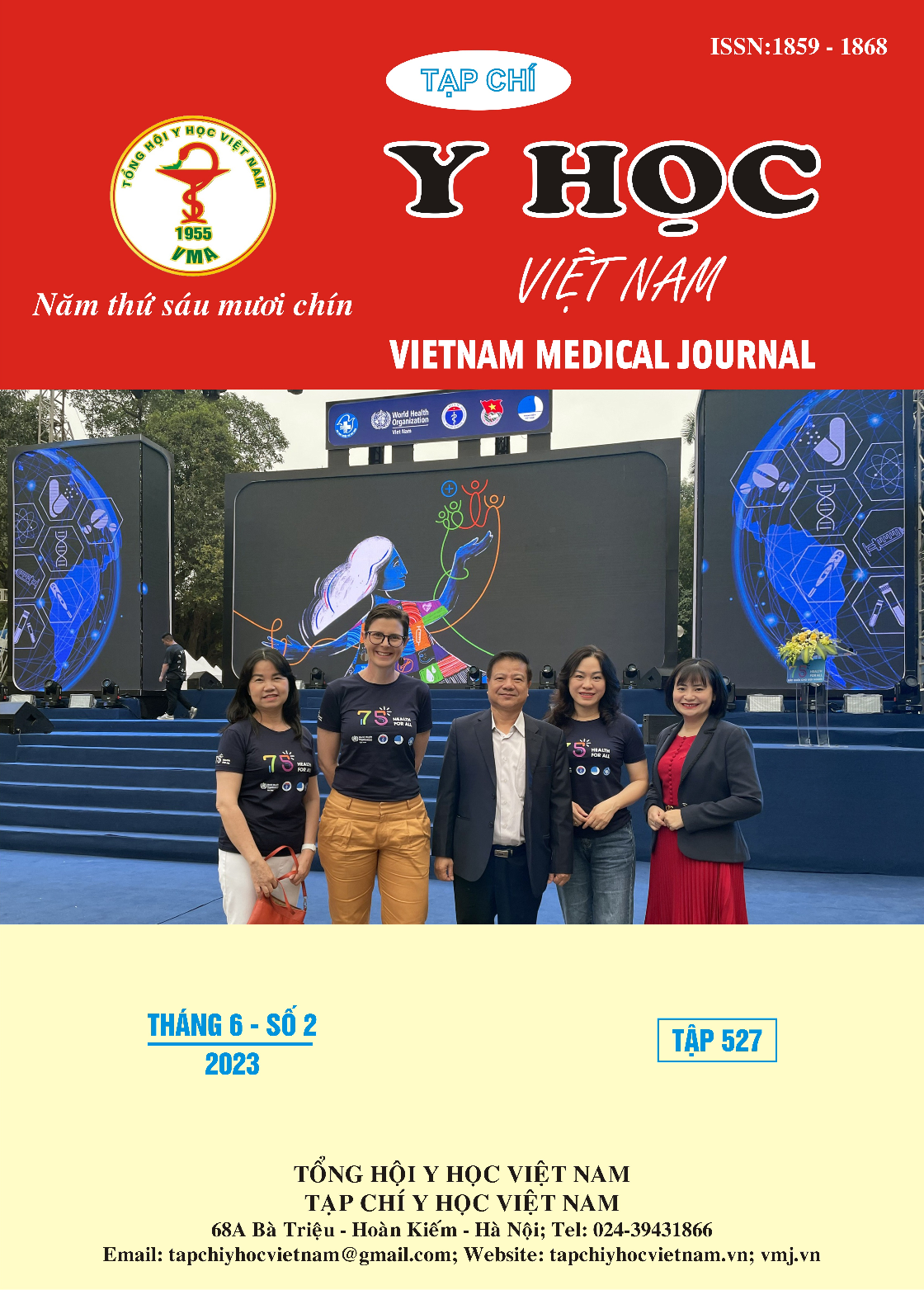THE RESULT OF CHORIONIC VILLUS SAMPLING AT PHU SAN HA NOI HOSPITAL
Main Article Content
Abstract
In Vietnam, it is estimated that every year about 2-3% of babies are born with genetic diseases and birth defects. Chorionic villus sampling, amniocentesis and fetal blood sampling are performanced to diagnose the fetuses with suspected genetic abnormalities. In which, chorionic villus sampling technique is effective in early diagnosis. The technique requires experienced surgeons, The technique requires experienced surgeons, and the equipment to perform it also needs to be carefully invested. In Vietnam, only a few medical facilities do it. At Fetal Intervention Unit of Phu San Ha Noi hospital, we learned the technical process of chorionic villus sampling from Necker Hospital of France and initially applied it from January 2022 to present. Objective: Describe the results of chorionic villus sampling at Fetal Intervention Unit - Hanoi Obstetrics and Gynecology Hospital. Methods: Cross-sectional description of over 20 pregnancies assigned to have placental abruption biopsy at Fetal Intervention Centre of Phu San Ha Noi hospital. Results: High abnormal detection rate: 12/20 cases. Detect a variety of genetic abnormalities: aneuploidies, chromosomal structural mutations, single gene disorders. Complications after the procedure: No cases have been recorded. 12 abnormal pregnancies were terminated early at 13-15 weeks. Conclusion: Chorionic villus sampling helps in early diagnosis of genetic abnormalities of the fetus, 3-5 weeks earlier than amniocentesis. It can be applied to prenatal diagnosis of single-gene disorders such as thalassemia, Duchenne/Becker muscular dystrophy, spinal muscular atrophy, Pompe disease and some other metabolic disorders for which no specific treatment methods is available, and also applied to diagnose high-risk pregnancies of abnormal chromosome number and structure, especially cases of high-risk Trisomy 21, 18, 13 after Non-invasive prenatal screening (NIPS) accompanied by typical morphological abnormalities on ultrasound, cases of increased nuchal traslucency (above the 95th percentile of crown rump length).
Article Details
Keywords
chorionic villus sampling, prenatal diagnosis, chromosomal mutation, single-gene disorder.
References
2. Mastroiacovo P, Botto LD, Cavalcanti DP, et al. Limb anomalies following chorionic villus sampling: a registry based case-control study. Am J Med Genet. Dec 1 1992;44(6):856-64. doi:10.1002/ajmg.1320440639
3. Judah H, Gil MM, Syngelaki A, et al. Cell-free DNA testing of maternal blood in screening for trisomies in twin pregnancy: updated cohort study at 10-14 weeks and meta-analysis. Ultrasound Obstet Gynecol. Aug 2021;58(2):178-189. doi:10.1002/uog.23648
4. Silver RK, MacGregor SN, Sholl JS, Hobart ED, Waldee JK. An evaluation of the chorionic villus sampling learning curve. Am J Obstet Gynecol. Sep 1990;163(3):917-22. doi:10.1016/0002-9378(90)91096-u
5. Bakker M, Birnie E, Robles de Medina P, Sollie KM, Pajkrt E, Bilardo CM. Total pregnancy loss after chorionic villus sampling and amniocentesis: a cohort study. Ultrasound Obstet Gynecol. May 2017;49(5):599-606. doi:10.1002/uog.15986
6. Malvestiti F, Agrati C, Grimi B, et al. Interpreting mosaicism in chorionic villi: results of a monocentric series of 1001 mosaics in chorionic villi with follow-up amniocentesis. Prenat Diagn. Nov 2015;35(11):1117-27. doi:10.1002/pd.4656


